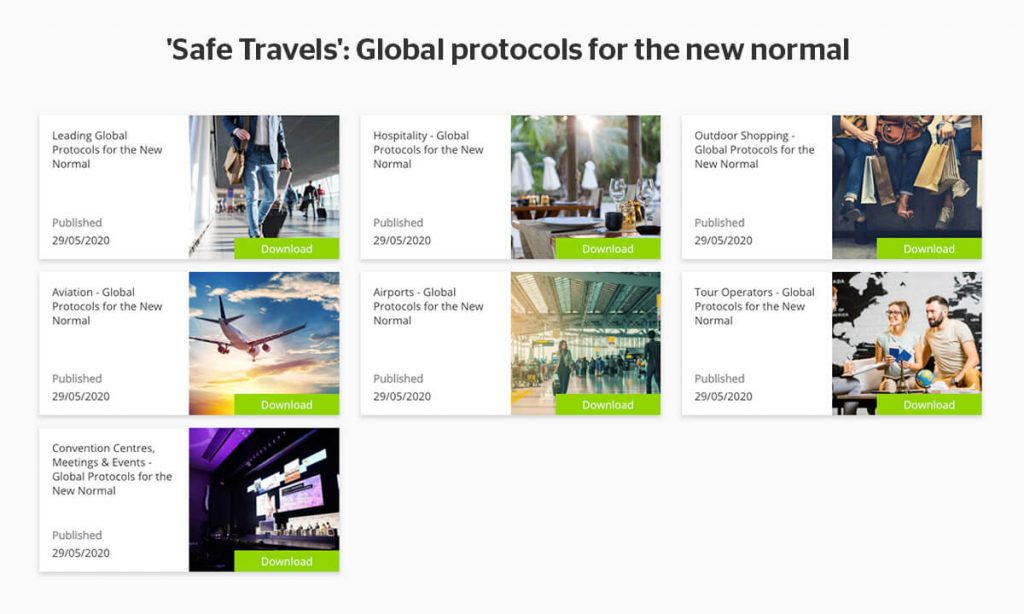Kelly Kolb
Vice President, Government and Industry Affairs, Travelport
Share article
After months of crisis management in the wake of COVID-19, the aviation industry is now entering a new phase: planning for recovery. As airlines around the world tentatively restart operations, the focus is now shifting to how to travel in a safe, healthy, and responsible way. To do this, it’s essential that the right protocols are in place across all functions in the industry.
The newly published paper Leading global protocols for the new normal in aviation outlines guidelines that the World Travel and Tourism Council (WTTC) recommends to airlines and governments. Travelport appreciated the opportunity to participate in the development of these protocols along with our travel and tourism partners.
Greg Webb, Travelport’s Chief Executive Officer, recently noted that “The global travel industry is united in its desire to support a safe, healthy and responsible return for travel. However, for this to be achieved, the industry and governments across the world must now unite around a consistent set of clear, practical and meaningful protocols, which are backed up by medical evidence and give travelers the confidence they need to once again take to the skies. We applaud the World Travel and Tourism Council for taking the lead on developing the Aviation Global Protocols and are proud to have contributed to their formation.”
The protocols center on four key areas:
Operational excellence will underpin the potential to travel in the ‘new normal’. For airlines, this means having a COVID-19 action plan that sets out their approach to cleaning, staff safety and health, physical distancing, the provision of personal protective equipment (PPE), food safety and more. These policies should be aligned with partner airports and other key stakeholders such as catering and transport partners.
Achieving the operational excellence needed for safe travel will mean training for staff on how to execute these action plans. This includes providing them with relevant guidelines, tools, and support for managing stress.
To make travel safe for both crew and travelers, airlines should implement processes focused on enhanced sanitation, disinfection and deep cleaning practices, as well as increasing their cleaning/disinfection frequency.
This applies to the plane and to check-in and boarding areas, plus other high-frequency touch points. Cleaning products must be approved by health authorities, and disinfecting products such as alcohol-based hand sanitizer should be made widely available.
Health screening (if mandated and backed by medical evidence) should also be undertaken in conjunction with government entities. Where possible this should take place electronically to minimize risk and prevent operational delays at airports.
In-person entry/exit checks should be as non-intrusive as possible for travelers, facilitated through full-body infrared scanners, handheld infrared thermometers, and ear-gun thermometers. The paper also recommends that flight crew should be exempt from screening or quarantine measures on arrival.
Physical distancing, limited face-to-face interaction, and minimal human contact should be prioritized at all touchpoints where possible using guidance, electronic, and online methods. This may require airport redesign in the longer term.
On board, measures to ensure health and safety include boarding from back to front, window to aisle and limiting movement in the cabin. Enhanced food safety can be achieved by offering packaged food and providing covered cutlery.
Communication and transparency are key to rebuilding traveler trust and confidence. Before their trip, travelers should know the airline’s new health and hygiene safety protocols, as well as government requirements. This should cover guidance on face masks, hand hygiene, the provision of approved sanitation products, and physical distancing.
Traveler facing/front office staff will also need training to answer questions and to support safety during interactions. This should be supported by signage to communicate safety messages throughout their journey.
Finally, the industry must also cooperate with national authorities on contact tracing apps, and with third-party providers to offer traveler insurance covering COVID-19.
Enabling policies need to be implemented at a governmental level, and a coordinated approach between governments will be needed to restart international travel. Policy changes should then be communicated in a clear and timely way.
The aviation industry is calling on governments to provide financial relief to the sector through the alleviation of payroll taxes, corporate taxes, concession fees and other government incomes from the industry. Low-interest or interest-free loans, loan guarantees or direct support will also help to maintain financial liquidity.
Incentives like waiving taxes or fees, cheaper and simpler visa procedures, and providing direct support to destination marketing organizations both domestically and internationally will help boost demand for travel.

For airlines to recover from the COVID-19 crisis, travelers will need to feel assured that their safety is being prioritized first and foremost. The development of a COVID-19 action plan is the first step for airlines to address the practicalities at hand. Once this is in place, clear, consistent, and enhanced communication on these new health and hygiene safety protocols is the best way to alleviate some of the fear that may initially deter travelers from booking trips.
You can read all global protocol documents for the travel and tourism industry, including hospitality, airports and tour operators here.
Since the beginning of the pandemic, Travelport has been communicating with our agency customers and travel partners through our regularly updated resource hub of information. This has helped to provide clarity and insight onto the impact COVID-19 is having on travel, and guidance for navigating through rapidly changing circumstances.
As travel begins to restart, we’ll continue to update the hub with useful information and resources on recovery.